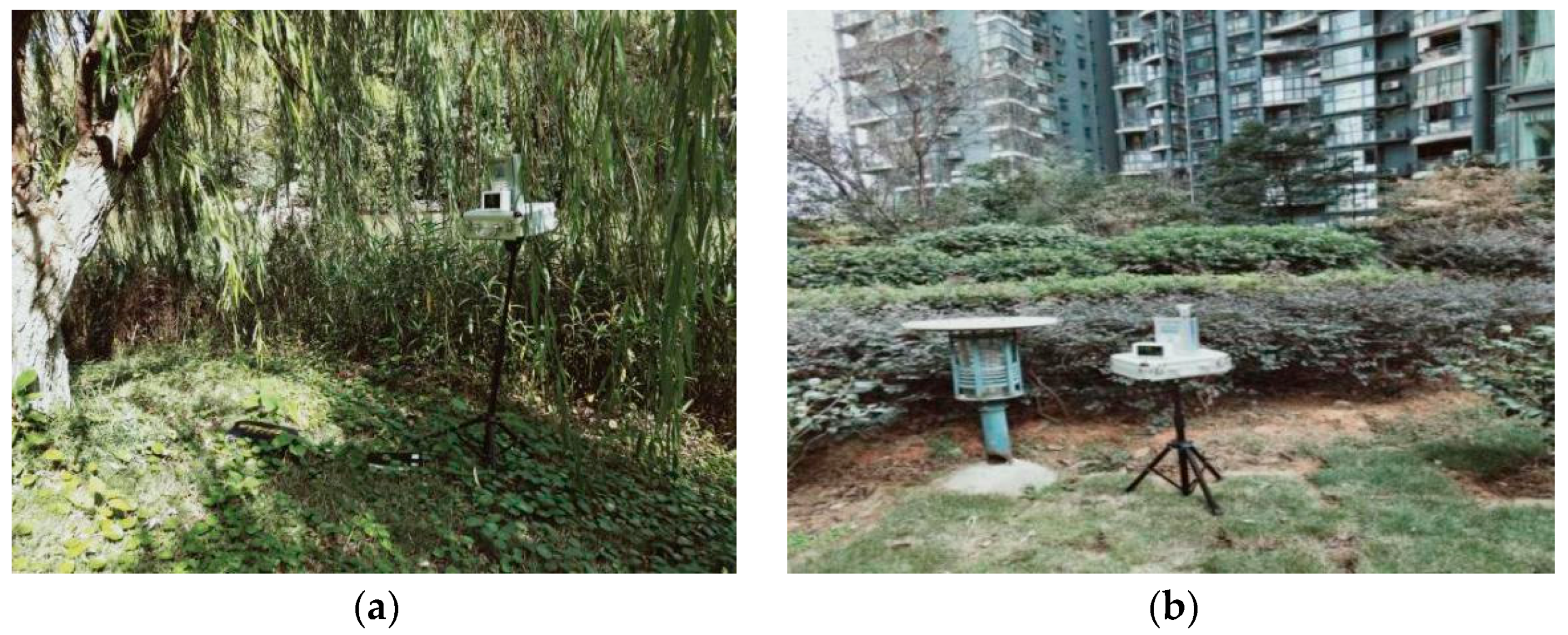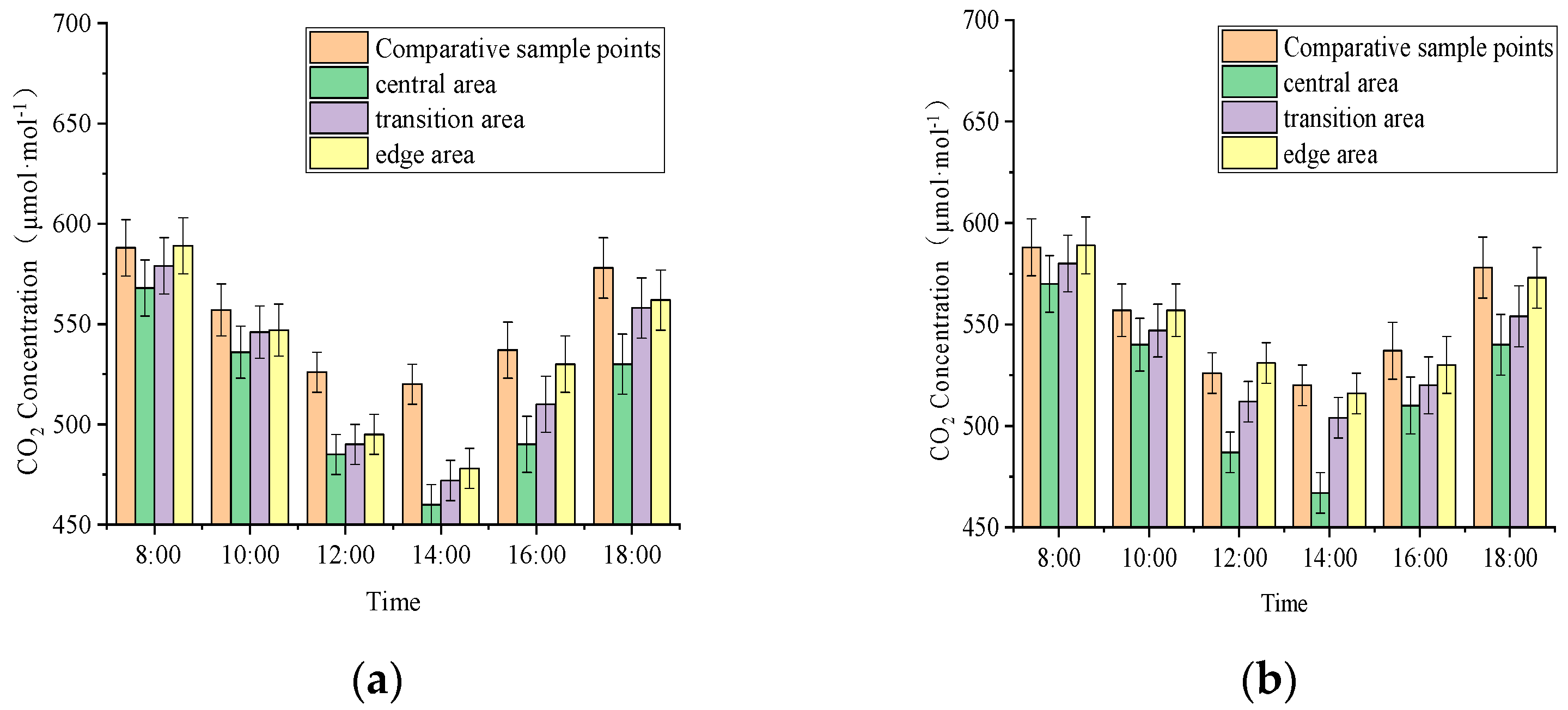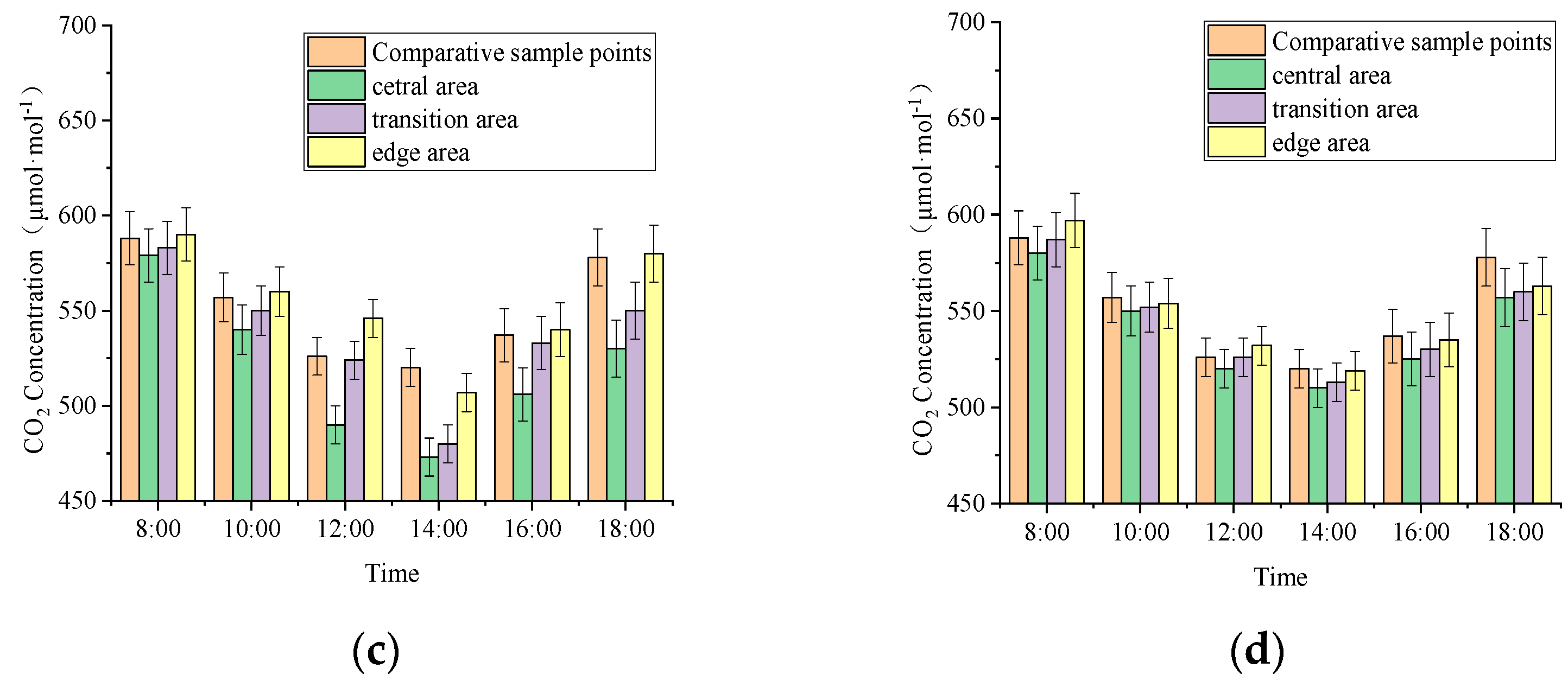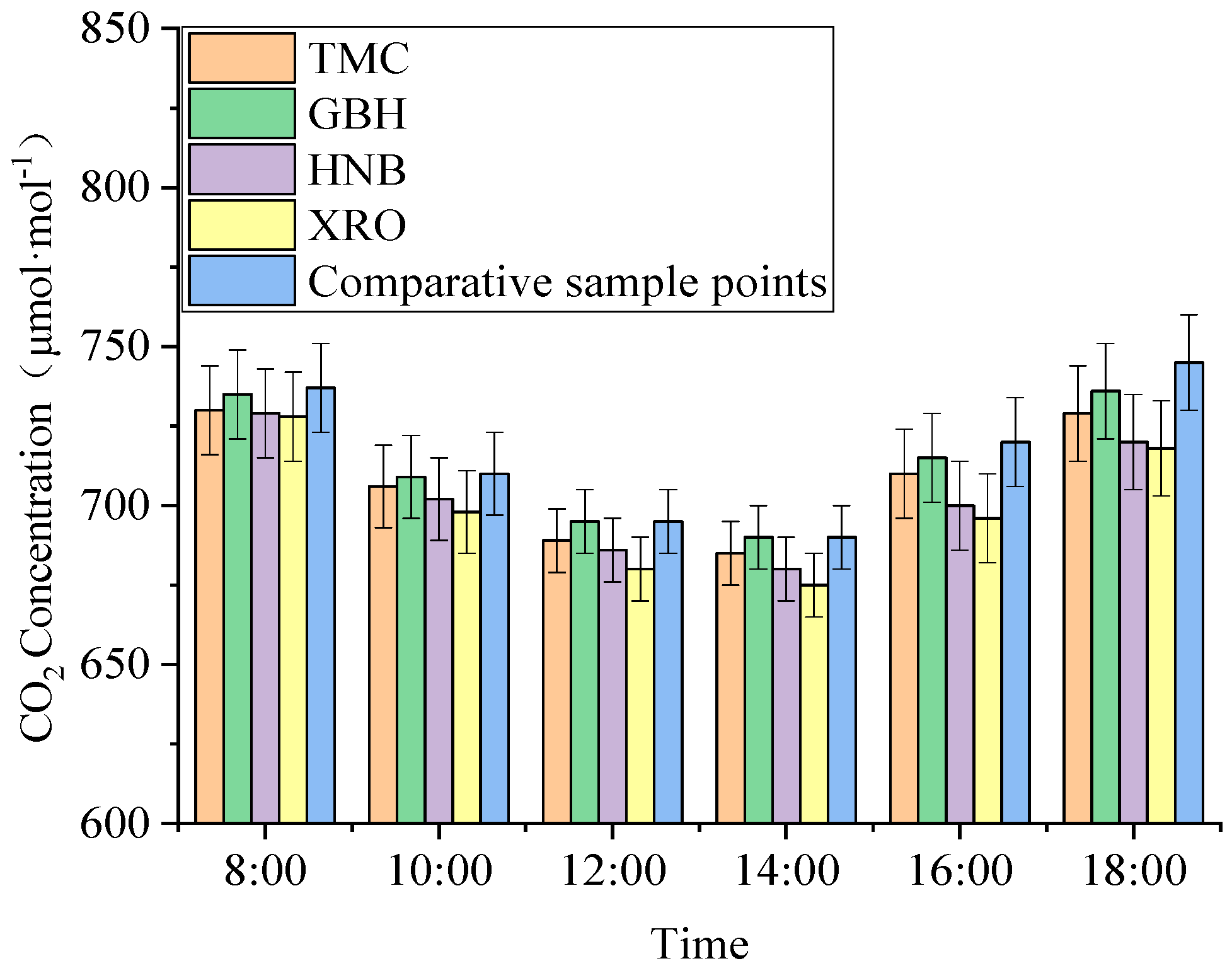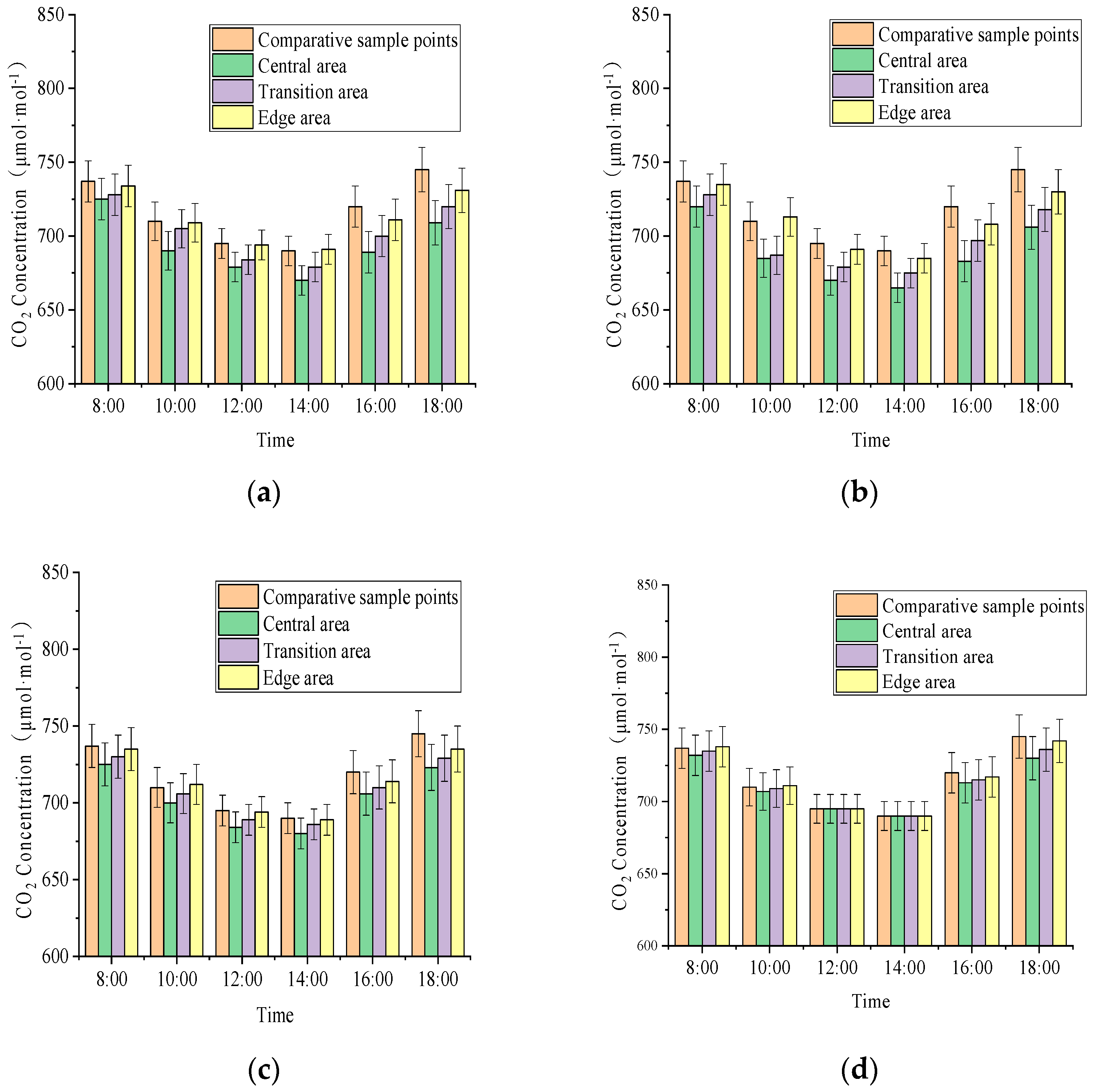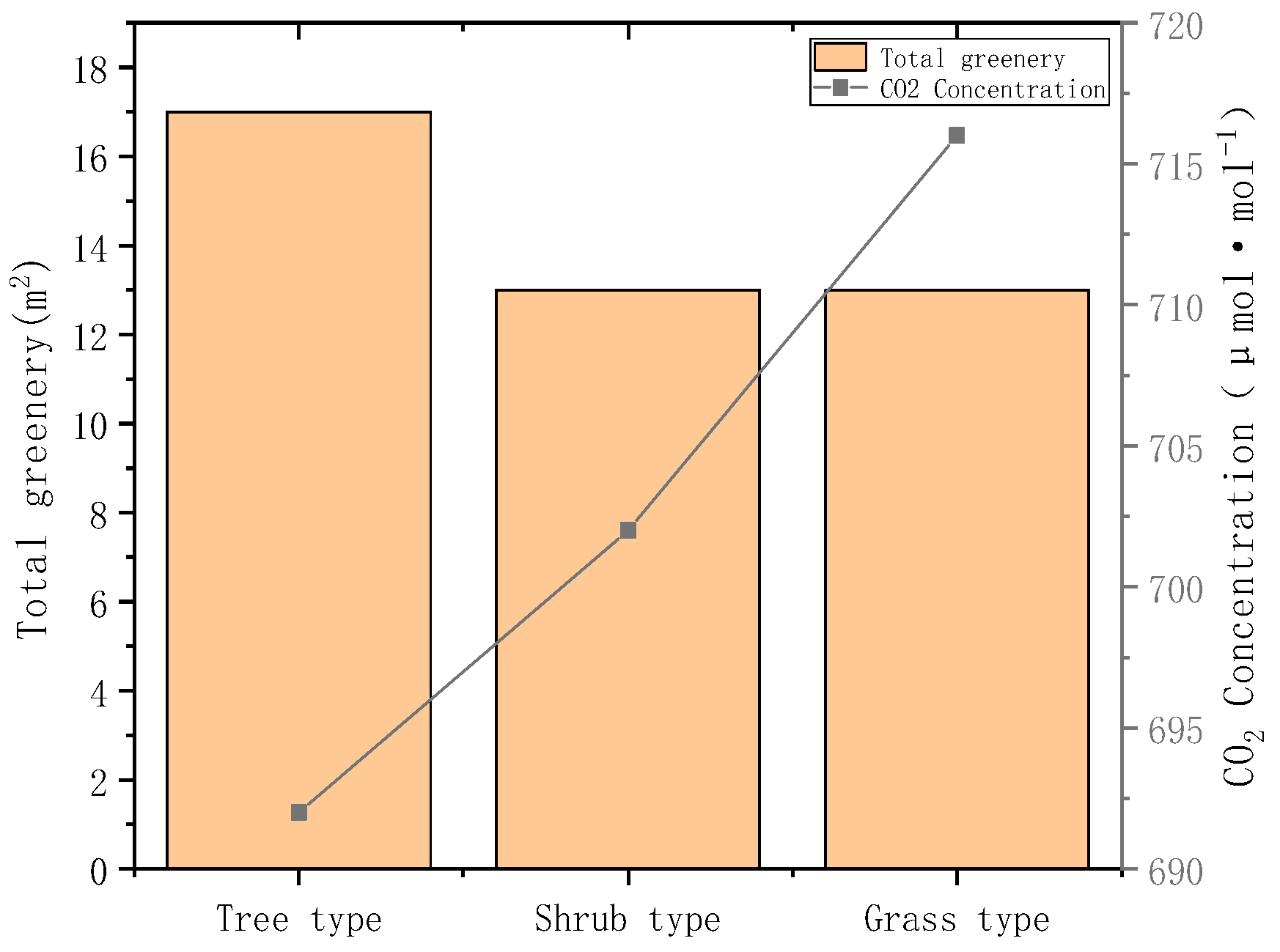1. Introduction
The urban residential areas, as an essential component of ecosystem, have become a topic of everlasting interest to researchers and practitioners. In order to maintain the sustainable development of the urban residential areas, during the preceding decades, much effort has been directed towards the exploration on the ecological environmental bearing capacity of the green spaces [
1,
2], the coupling effects of human activities and variations of natural ecological environment [
3], as well as the environmental amenity in urban residential areas [
4,
5]. Recently, due to the unceasing acceleration of global climate change (also known as the greenhouse effect) induced by the uncontrolled emission of CO
2 and other greenhouse gases [
6], the concept of low-carbon development has been treated as the main theme on the topic of sustainable development in urban residential areas around world [
7,
8].
So far, in order to mitigate the greenhouse effect, a number of countries have introduced several limitation targets against carbon emissions to aim to achieve efficient carbon sequestration. For example, China has pledged to achieve the target of carbon neutrality by 2026. In detail, the main components of the greenhouse gases are H
2O, CO
2, CH
4, and CO. Specifically, the main route of the carbon cycle can be demonstrated as follows: CO
2 from atmosphere is firstly absorbed by land and marine plants, then returned to the atmosphere through biological and geological processes and human intervention. During this cycle, the effects of CH
4 and CO are relatively moderate when compared with CO
2 [
9,
10]. Due to the fact that H
2O is usually not affected by human activities and CO is an indirect element, the CO
2 can be treated as the most contributing factor that enhances the greenhouse effect [
10]. Therefore, a number of countries have conducted a series of programs to monitor the urban atmospheric CO
2 concentration [
10,
11,
12].
At present, since most research regarding carbon sequestration mainly focuses on the bearing capacity of land, forests, lakes, and other large-scale spaces, the studies on smaller-scale green spaces are limited. For example, Rowntree and Nowak [
13] estimated the carbon storage of urban forests in the United States, then analyzed the carbon absorption for urban green space and the reduction effect on carbon emission caused by human activities in two cities; Idso et al. [
14,
15] studied the distribution of near-surface atmospheric CO
2 concentration in Phoenix based on the inverse distance weight interpolation method and indicated that the concentration was significantly higher before sunrise than that of middle of day, and the causes were concluded to be the coupling effects of the atmospheric vertical mixing and vegetation photosynthesis; Wentz et al. [
16] addressed the correlations among near-surface atmospheric CO
2 concentration, urbanization level (in terms of population, average traffic flow, and employment), and the vegetation coverage rate based on mobile monitoring data with regression analysis; Henninger et al. [
17] studied the near-surface atmospheric CO
2 concentration in Essen based on mobile monitoring data, and the results showed that there were significant variations in different measuring areas and times for the concentration, and the average value in cities was 8.9% higher than that in suburbs. In addition, the research also found that the concentration variation was greater in winter when compared with summer, which resulted from the seasonal alterations in carbon emissions, the efficiency of the vegetation photosynthesis, and atmospheric conditions.
Concretely, with the continuous improvement of residents’ living conditions, green plants have been treated as an indispensable component for the construction of modern urban residential areas [
18,
19,
20,
21,
22,
23,
24,
25]. For instance, Liang [
21] studied the greenhouse effect by focusing on the green plants in residential areas and pointed out that the special physiological process of green plants, including carbon fixation and oxygen releasing, can contribute to the mitigation of the greenhouse effect. Meanwhile, in order to achieve eco-friendly and low-carbon development in both urban and rural areas, several countries have also issued a series of guiding documents specific to green plants [
26,
27,
28].
According to previous studies, most researchers believed that the ecological environmental benefits resulting from the carbon sequestration of green plants were chiefly dependent on the efficient areas of leaves for completing the photosynthesis. Such benefits were usually determined by measuring the green quantity in certain regions [
29,
30,
31,
32], and plant carbon sequestration ability was generally calculated based on the relative biomass [
33]. Hence, in this research, the CO
2 concentration is treated as the main operable factor for evaluating the effect of greenhouse gas on the urban ecological environmental condition. The relationship between the quality of the green space and the ecological environmental bearing capacity will be analyzed based on the measurement of CO
2 concentration in several sampling points.
Therefore, based on the above assertions, the main objective of the current research is to investigate the effects on the CO2 concentration resulting from measuring time, location, and the plant community structure of the green spaces in urban residential areas. It is believed that the results can provide a theoretical basis and practice support for planning and constructing green spaces in order to efficiently improve the ecological environment in urban residential areas.
2. Materials and Methods
2.1. Observation Sites Setup
The observation sites were set up in four urban residential communities, which were located in the North (Xiangjiang River One and Huasheng New Band, aka XRO and HNB, respectively), central (Tongtai Meiling Court, aka TMC) and South (Ginkgo biloba home, aka GBH) areas of Changsha City in China, respectively. Specifically, in those communities, the plant spaces were all constructed after 2007, so the comparability for relevant analysis can be guaranteed. All sampling points were set up in accordance with the principle of randomness and uniformity and arranged in intersection points with help of GPS positioning. Meantime, the locations of these sampling points were fine-tuned according to the plant community structure of the green spaces. The detailed information of the plant community structure is listed in
Table 1. In addition, in order to obtain the spatial gradient of CO
2 concentration in the urban residential areas, for each observation site, the measuring areas were separated into central zone, transition zone, and edge zone.
Concretely, the ground green space chiefly consisted of shrubs, grass, and the trunks of trees. Therefore, the total green quality in this research is determined as the sum of the areas of the shrubs, grass, and the vertical projection of trees. Additionally, by considering the overlapping effect of the above-mentioned areas, the value of the vegetation coverage for the different varieties of vegetation can be eventually obtained.
Moreover, the bearing capacity of residential green space refers to the ability of the ecosystem to maintain its normal operation under various conditions. The relative bearing capacity index (also known as bearing capacity index ratio) is generally determined by the ratio of the measured value for ecosystem’s bearing capacity and the critical value for that in certain conditions. Specifically, when the bearing capacity index ratio is larger than 1, it indicates that the pressure of the whole ecosystem in the region is greater than the standard, and the ecosystem can no longer bear economic activities. When the bearing capacity index equals 1, it indicates that the pressure generated by the residential economic activities of the residential green ecosystem is equal to the supporting force of the system, which is within the bearing capacity range. When the bearing capacity index is less than 1, it indicates that the pressure faced by the ecosystem does not exceed the maximum value it can bear, and the threat brought by the economic activities of residents in the community has not caused a relatively obvious impact, so the overall ecosystem tends to develop healthily. When the number of impact factors becomes lower, the ecosystem effect will be better, and people will feel more comfortable and work more efficiently.
After the geographical positions of the sampling points were determined, measuring instruments were placed in the center of each point. Additionally, the canopy density and plant community structure were measured. In this research, the average CO
2 concentrations from two comparison sample points were treated as the background data of the ecological environment for the urban residential areas. In detail, the comparison sampling points were located on the east side of GBH and HNB, with a small number of surrounding green landscape environments, respectively. The detail information for the sampling points is listed in
Table 2.
2.2. Measurements Method
In this research, the instrument for measuring the CO2 concentration is Bohu intelligent CO2 detector. It is based on gold-plated infrared photoconductivity technology and capable of automatic calibrating with a measurement accuracy of ±30 ppm. During the measuring process, the self-contained software of the instrument was used to record CO2 concentration data per 60 s due to its sampling response time.
In order to guarantee the measured results are representative of spatio-temporal and ecological benefit factors, in this research, the measurements were conducted on a day when meteorological conditions and the weather conditions were relatively stable. During the measuring process, the instrument was kept within a certain distance from the ground (generally 1.4 m, and the monitoring time ranged from 8:00 to 18:00), as shown in
Figure 1. To avoid the influences of atmospheric temperature and humidity, data collection was carried out within an interval of two hours with a detection time of 5 min.
Moreover, in order to obtain the annual variation of CO2 concentration in urban residential green space, monthly measurements of CO2 concentration were also conducted between the 20th and 25th from May 2019 to May 2020. During the data analysis process, the average value of measured CO2 concentration of sample points was compared individually to indicate the environmental background data of the urban residential areas.
After obtaining the measuring data, the two-way and one-way variance analysis was conducted on the diurnal variation of measured CO
2 concentration based on difference method by considering the monthly variation and plant community structures, which was attempted to examine the influences resulting from both the measuring time and the location. In detail, relevant calculation methods are shown in
Table 3 and
Table 4, respectively.
Where is the level number of factor A, that is, the number of months and seasons; n is the total number of samples, denotes the mean of samples, nj denotes the number of repeated experiments under the level Aj, Xi is the average CO2 concentration under the level Aj (month and season), and Xij is the CO2 concentration in the jth region in the ith month or season
